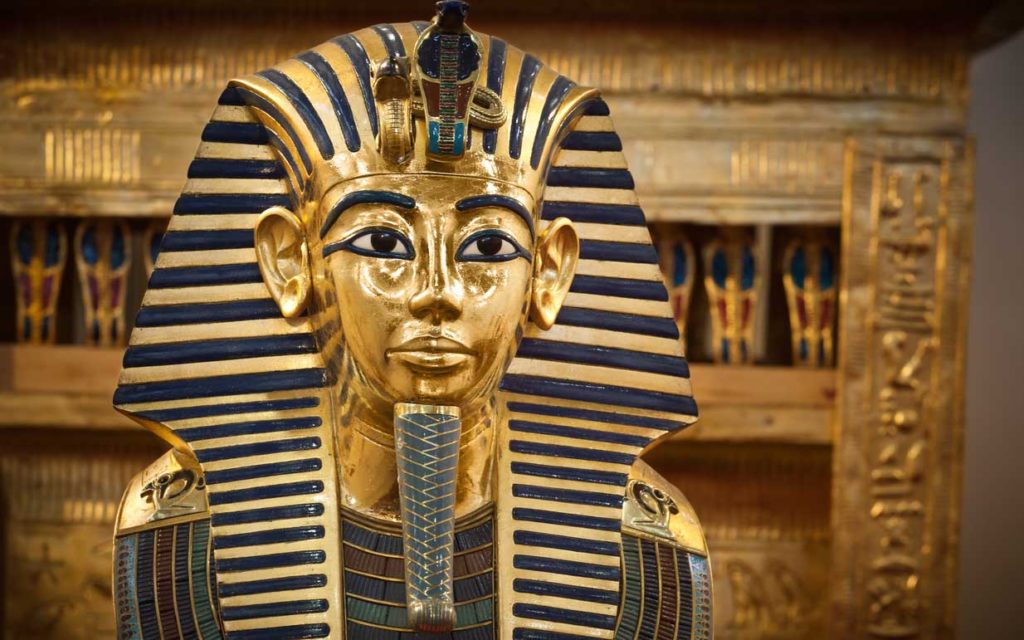
Gold has played a powerful role throughout human history.
Think of any ancient civilization… from the Egyptians, to the Greeks and Romans, or the Incas of South America… gold has always been seen as valuable.
One of the earliest archeological discoveries of gold was from burial sites in the area of Lake Varna, near the Black Sea. Gold artefacts uncovered there date back to over 4,000 years BC.
Gold was rarely used for practical purposes, because it was too soft as a metal. But from the beginning it has been used to express wealth, status, and power.
Gold adorned kings, emperors, princes and princesses.
It was used to create the finest of jewelry. It was sown into the robes of the powerful to express success and opulence.
Countries went to war over gold. People murdered one another for gold.
From the earliest times, gold has been a store of value and wealth across all civilizations and cultures.
In fact, over the millennia, love for gold is probably the only thing that all of these societies had in common.
They disagreed about many things.
But they all agreed that gold was both beautiful and valuable.
When gold was first used as money.
The first gold coin we know of is the gold Croesid, minted in Lydia, Turkey, in about 550 BC. It wasn’t like the flat, circular coins that would follow, it was thicker and more lozenge shared.
But it was a true medium of payment. It was money.
This was a huge advance over traditional methods of exchange, like barter.
With gold coins in your pocket, you could travel far and wide and make purchases far more freely.
By 100 AD, circular gold coins could be found in many parts of the world, from England to North Africa, the Middle East, India and the Far East.
Gold had become established as the premier measure of money. In second place, for small purchases of lesser value, silver coins became popular as well.
Governments stepped in to control the minting of gold coins.
In those early days, gold coins were being created by competing mints.
Governments soon put a stop to that. As always, they wanted control over the money supply.
The Royal Mint of the United Kingdom dates back over 1,000 years.
The Mexican Mint dates back to 1535.
And the U.S. Mint was created in 1792.
In other words, governments and the nation states they serve have recognized the intrinsic value of gold for a very long time. And they still control the minting of gold coins.
In a world of electronic finance, countries still stockpile gold bars.
Look at how much the world has changed in the last 50 years, the last 100 years, the last 1,000 years.
And throughout that period, gold has remained a constant.
Its price hasn’t been constant. And gold’s direct connection with the value of fiat currencies disappeared when the Gold Standard was abandoned.
But the trust we place in gold as the ultimate measure and store of value remains the same.
The US is sitting on gold reserves of over 8,000 metric tons. That’s in the form of physical gold bars, stored in vaults.
Germany has over 3,000 metric tons. Italy has almost 2,500 metric tons.
And so on.
This is why gold is still such a powerful store of value today.
In a fast-changing world, gold is the constant.
It was a powerful store of value 7,000 years ago. And it is the same story today. It’s still viewed as the most trusted and reliable form of money.
And that story still holds true across multiple countries, continents and cultures.
In a world where everything is changing fast, gold holds steady.
That’s we trust gold, and why we buy gold.

Further reading on gold…
The importance of gold in cultural traditions around the world.
The Alchemists’ Quest for Gold: A Story of Myth and Science

